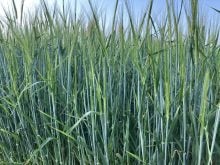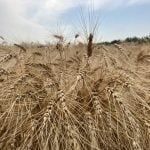The North American cattle and beef industry has endured “weather” and BSE-related markets but never a “fire” market such as resulted from the fire at Tyson Foods’ Holcomb, Kansas plant on August 9. The fire took out more than 30,000 head per week of capacity for several months. The loss is most directly having an impact on cattle feeders on the Southern Plains, as Kansas had 110,000 more cattle-on-feed on August 1 than a year earlier and Texas had 40,000 more on feed. That’s against a national inventory that was record large for the date but up only 19,000 head than a year ago.
Read Also

The Canadian Cattle Association’s international advocacy efforts
Global ag policies affect Canadian food policy, so the Canadian Cattle Association participates in international and domestic forums
Conversely, Nebraska had 140,000 fewer cattle-on-feed on August 1 than last year. So the fire hit the very region that could least afford to lose any capacity. Had a fire put a large northern plant out of action, I suspect the market impact would have been much less. On the other hand, futures traders are not the most logical bunch and there might still have been a big selloff in live cattle futures.
In any event, the futures market grossly overreacted and held its own fire sale of live cattle contracts. The market then appeared to admit its misreading of the fire’s impact and began to recover. But the damage to cash live cattle prices had been done, with five-area average prices the week after the fire falling US$5.69 per cwt. live and US$11.28 per cwt. dressed. Live prices inched higher the following week and dressed prices added US$4.39 per cwt. But they then fell back as packers bought cattle for a Labour Day holiday-shortened production week.
USDA’s Packers and Stockyards Division (PSD) is to investigate whether packers acted improperly or unfairly in the aftermath of the fire. The PSD, which mainly oversees livestock market behaviour, will launch an investigation into recent beef pricing margins to determine if there is any evidence of price manipulation, collusion, restrictions of competition or other unfair practices, said Agriculture Secretary Sonny Perdue in late August. If any unfair practices are detected, USDA will take quick enforcement action. USDA remains in close communication with plant management and other stakeholders to understand the fire’s impact to industry, he said.
It is not known if the Commodity Futures Trading Commission will be involved in the investigation. This would seem logical as live cattle futures prices plummeted in the week after the fire. The August contract lost 813 points before starting to recover the following week. An argument could be made that the futures market, not packers, should be the main focus of the investigation. The futures’ fire sale in large part caused cash live cattle prices that week to decline so much.
The futures market’s big mistake is that it did not take into account Tyson’s ability to shift production to its other five plants and other packers’ ability to increase their daily and Saturday slaughter levels. Weekly and Saturday kill totals bore this out. The week after the fire saw a total of 653,282 head slaughtered, with 73,601 head on Saturday. The following week was an estimated 654,000 head and 77,000 head, respectively. These were by far the two largest Saturday kills of the year for a non-holiday week. The big question is whether packers have sufficient workers to sustain such kills during the week, but particularly on Saturdays, for several more months. At least they have plenty of money to pay overtime, as their operating margins soared to record levels in the three weeks after the fire.
















